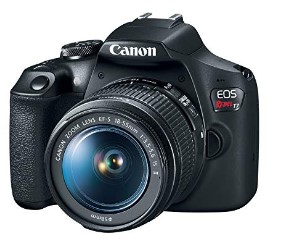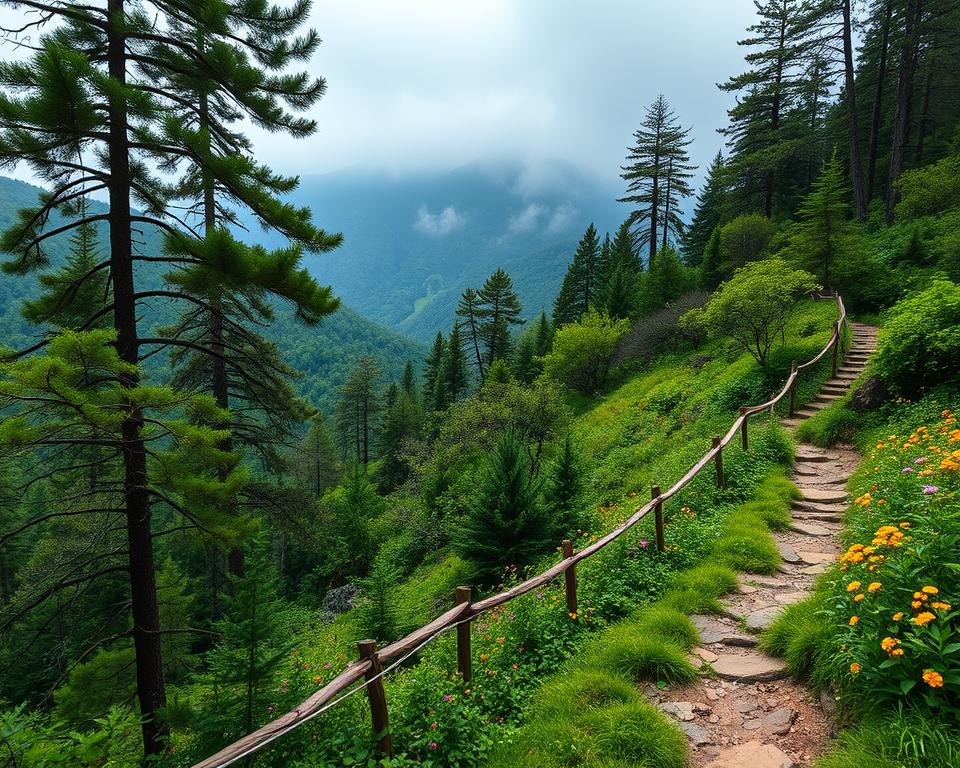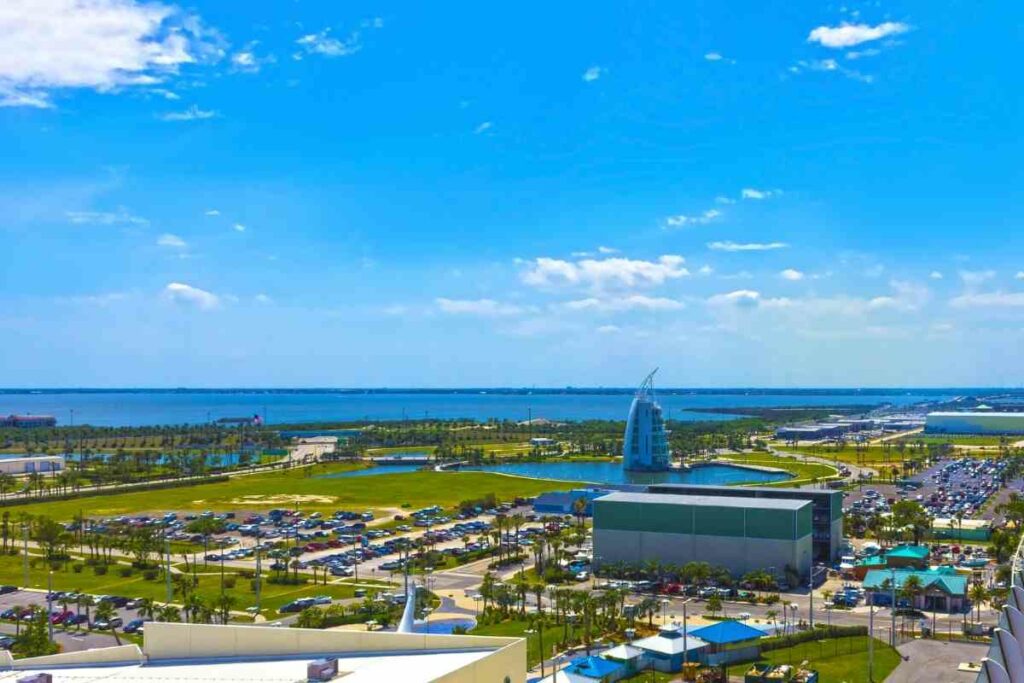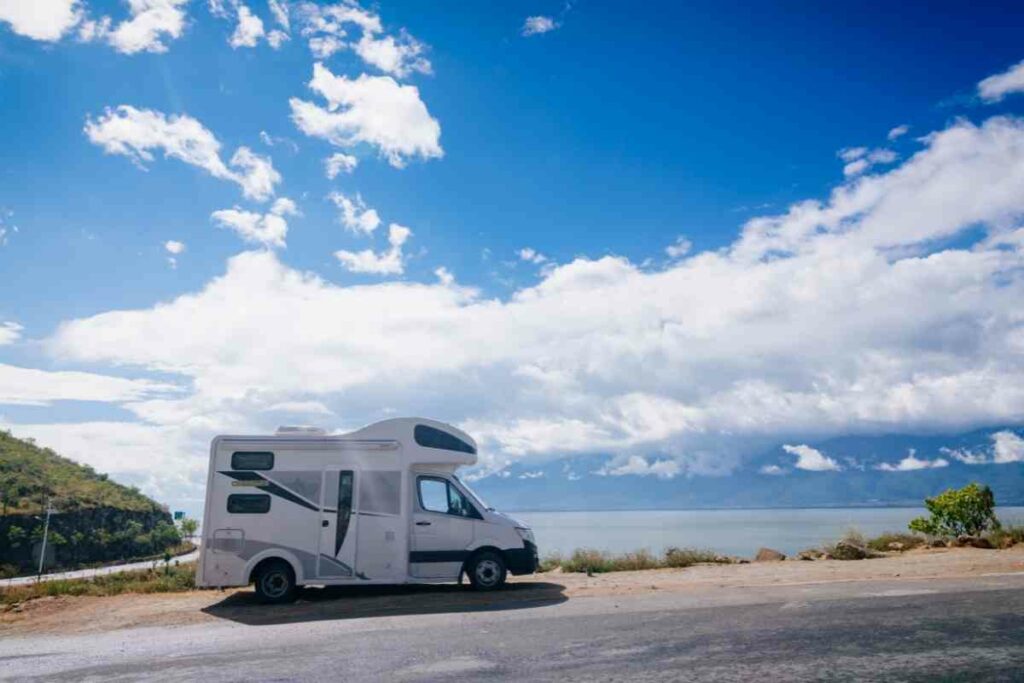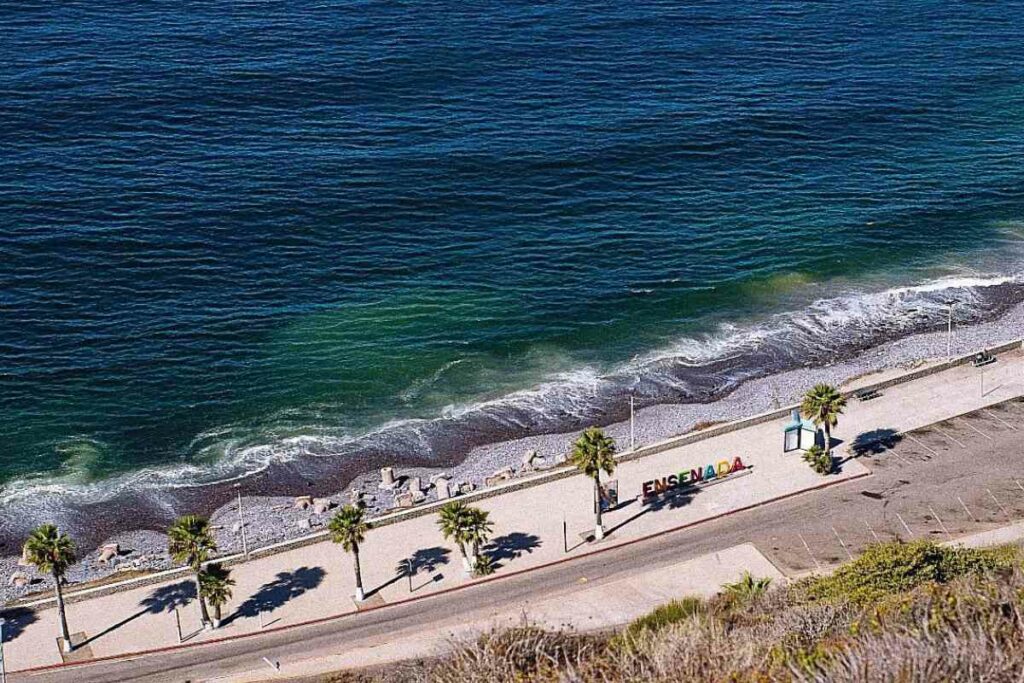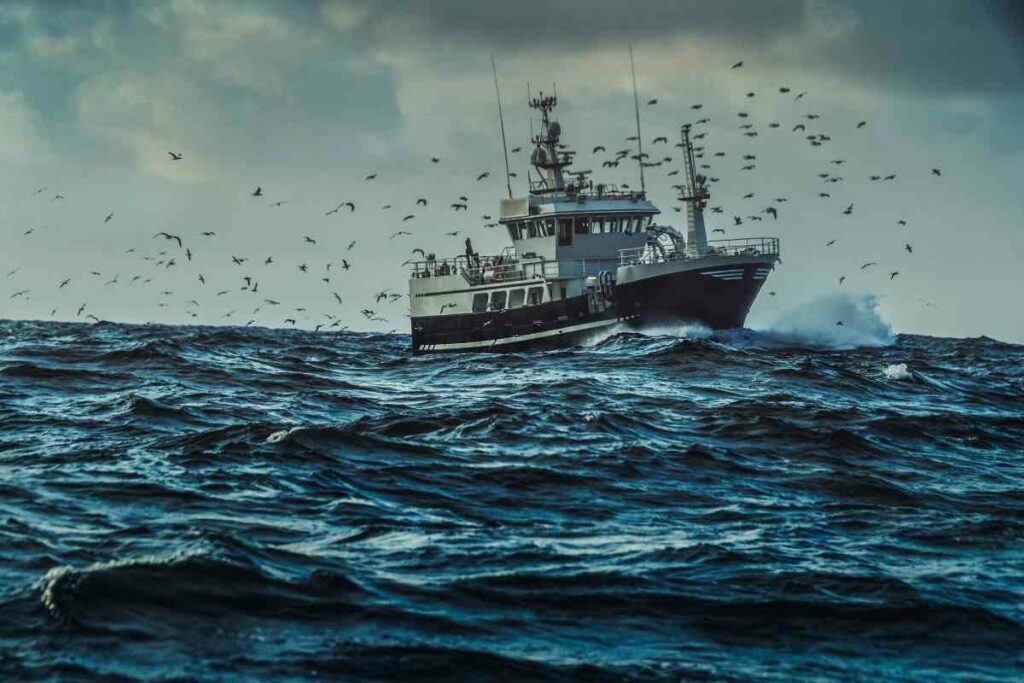Whale-watching is an experience that fills your mind with wondrous images and your heart with experiences not to be forgotten for a lifetime.
Cruising Alaska’s wild and picturesque frontier creates the same feelings. What better way to double the power of this experience than by doing so together?
In order to have this once in a lifetime adventure, timing is everything. Well, not everything, exactly.
Prior to Your Planning – You may want to consider what types of whales you are looking to catch glimpses of, where the best places in Alaska are to see them, can you catch an excursion from your ship, and what you need to make it as memorable as possible.
In this article, we’ll tell you all about whale watching in Alaska, including the best time to see them.
When Is The Best Time Of Year To Book An Alaskan Cruise To See Whales?
The answer here is not a simple one.
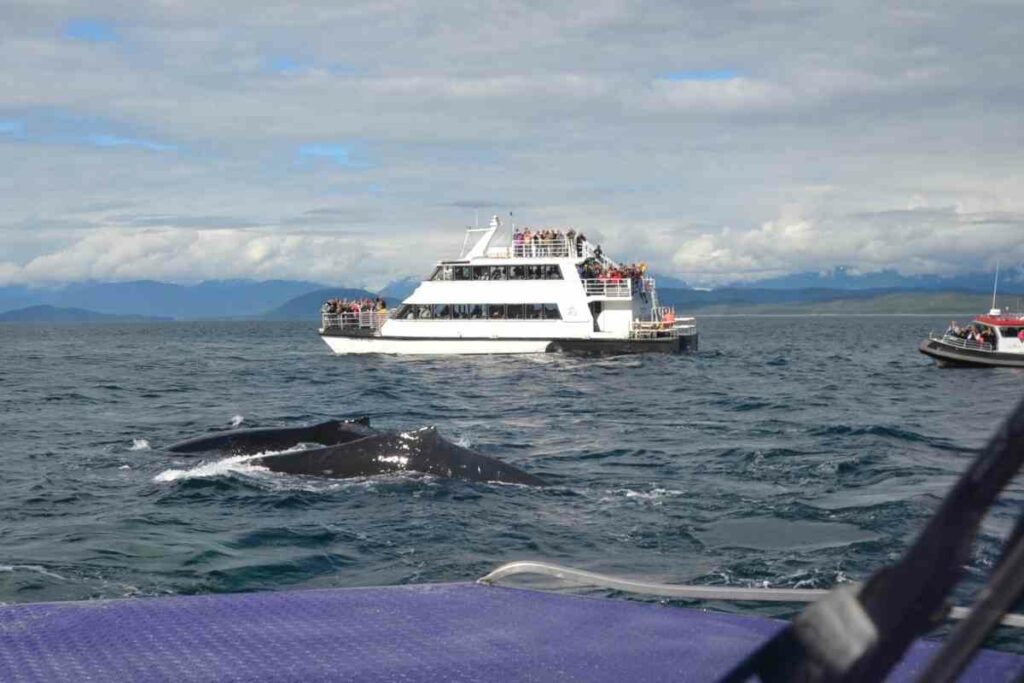
The technical answer for the best time to cruise and see the magnificent wildlife starts with their summer migration, beginning in the spring.
Planning your perfect Alaskan cruise would be best suited sometime between May and September.
The timing for a cruise during these months also works perfectly for your wardrobe – this is the Alaskan spring/summer months, and the weather is just beautiful!
You likely have a favorite of these magnificent creatures that you would be most excited to see in the wild.
Read later – 4 Best Alaska Fishing Trips
There is more narrowing down that we can do to have a better chance of you catching that perfect shot of your beloved whale.
I Want To See A Particular Whale Type. When Do I Go Then?
We all have a type of whale that is our favorite – much like our favorite breed of dog or cat.
The best time to capture a closer look at our favorite mammals of the sea varies from species to species.
For Example – A gray whale is best seen in April and May, whereas the smaller Minke whale can be seen between June and September.
The Elusive Blue Whale
As the biggest animal on Earth, you might think that blue whales may be easier to spot than they actually are.
These mammoth and gentle beauties prefer deeper waters and are hardly ever seen near the shoreline.
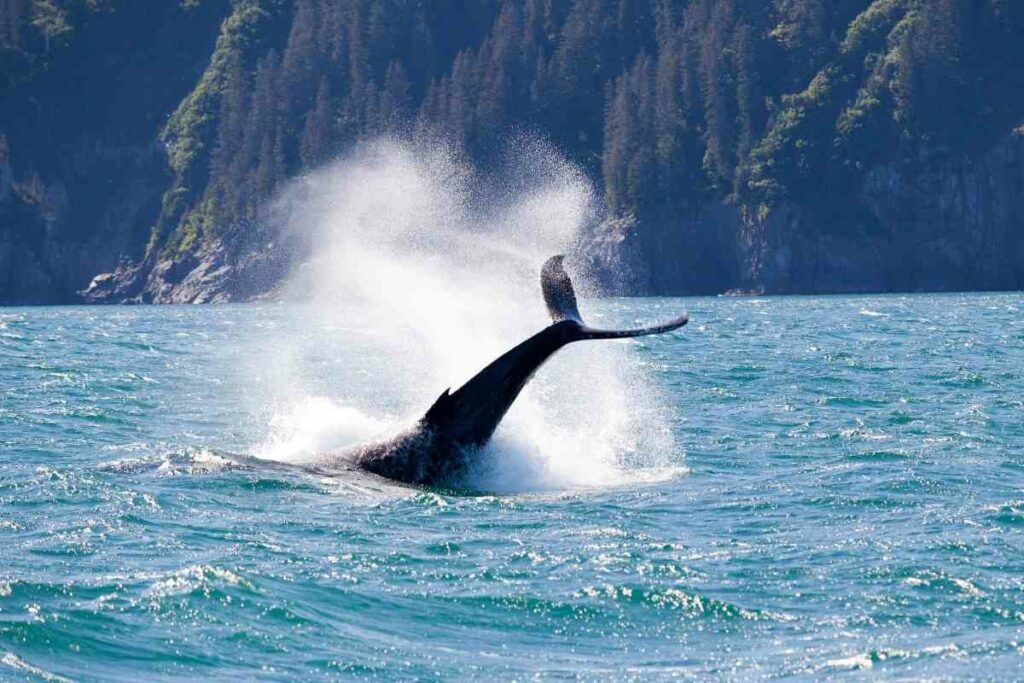
Blue whales aren’t commonly seen in Alaska unless it’s in July and August.
Making sure your cruise is going as far north as possible will also help you see the elusive blue whale.
They tend to make the northern part of the Gulf of Alaska their summer home.
You may also like ?
The Charming Humpback Whale
A true fan favorite of the west coast of North America, these ridged sweethearts of the deep love to frolic in the Alaskan waters.
After their migration to the Inside Passage of Alaska, they are most seen in June and July, showing off their cool behaviors.
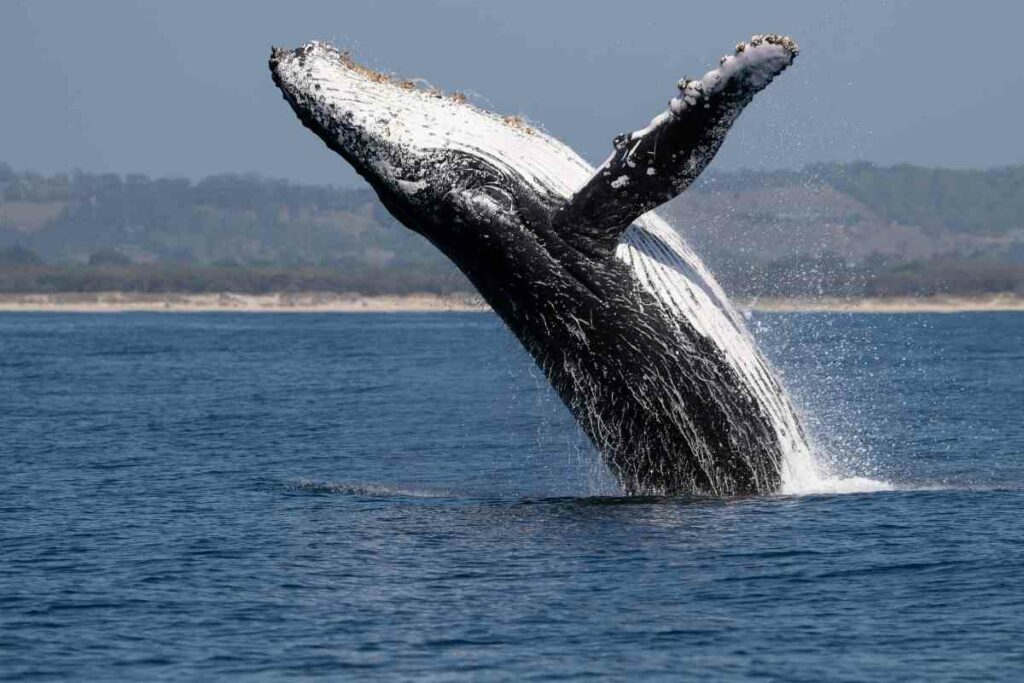
Humpbacks are known for traveling the world over but do really enjoy the summer waters of Alaska.
Here they may be seen vaulting out of the water in a graceful breech or bubble-net feeding, an activity they only do during their summer months.
You may even be fortunate enough to hear the song of a male, looking for his dream girl.
The Apex Predator – Orcas
One of the most common sea creatures to see from the surface in Alaska maybe the killer whale.
Interestingly enough, killer whale may be the wrong term for the orca as it’s in actuality the largest dolphin!
Unlike some of the other whales to be seen in the waters of Alaska, the orca loves to travel in pods and are highly social creatures.
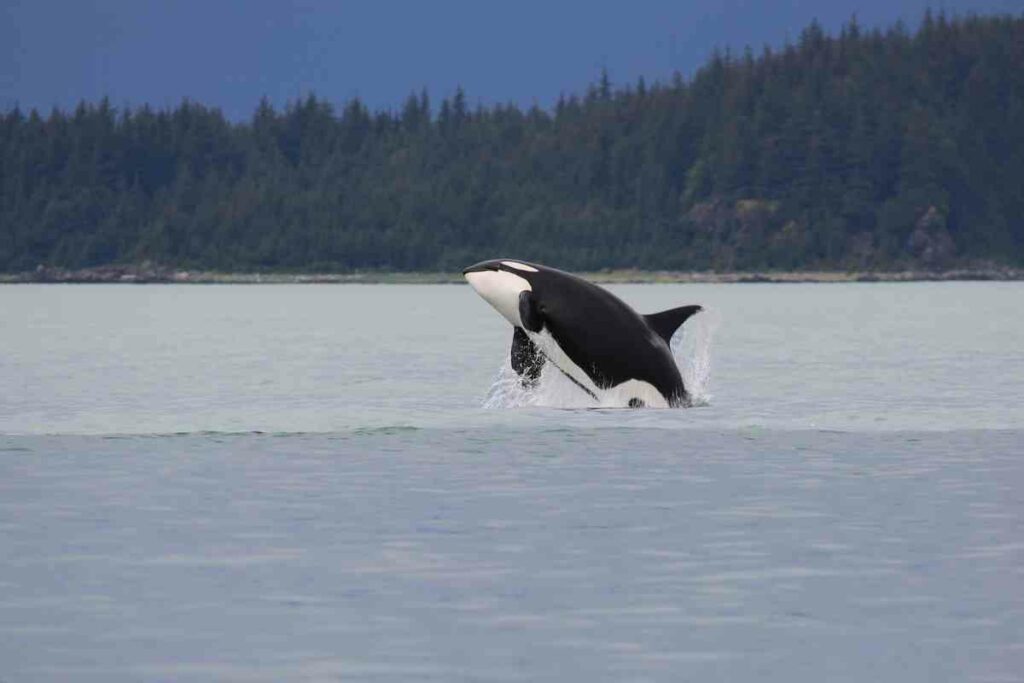
This makes them some of the most likely to spot, especially if you cruise to Resurrection Bay Alaska May to June, although it’s possible to catch sight of them through September.
Quick read
When is the best time for whale watching?
If you want to see whales in Alaska, you’ve got a great range of best times. You’re most likely to see them from May through September.
Here are some of the best times to see whales in Alaska.
Alaska Whale Watching in May
May marks the start of a new whale watching period. In Alaska, May is generally a settled and dry month with pleasant whether.
In May, there are fewer visitors too, which means you can get closer to the whales. You’ll also find it easier and cheaper to get on a whale watching cruise.
Alaska Whale Watching in June
Like May, June is one of Alaska’s warmest and driest months. If you’re keen on seeing orcas, aim for the start of the month as is the best time to see them.
July Whale Watching
Summertime in Alaska means you’ll be able to see whales and be more comfortable while you do so due to the warmer weather.
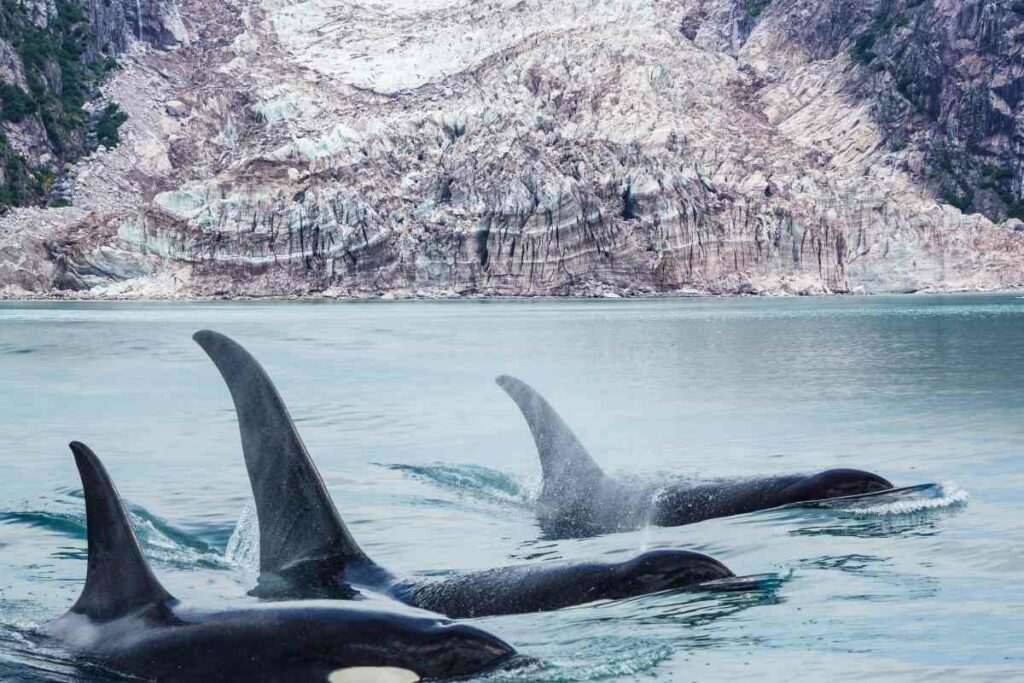
However, this is the time of year when tourists are out in force and so prices for whale watching cruises shoot up. It’s also a lot more crowded too.
August Whale Watching
August is similar to July – a busy and warm month. In terms of what you can see, August marks the end of your chances to see blue whales before the head to the Pacific Ocean, Central America, and Mexico.
You may also like ?
Changing seasons – September whale watching in Alaska
You’ll find the days start to be cooler in September in Alaska, which means the end of the summer’s whale watching season.
After this month, you’re no longer going to see humpback whales as they’ll be following in the blue whales’ footsteps and heading to the Pacific Ocean and Central America by the end of the month.
However, September is much quieter on the tourist front as the peak season has ended, which might be better!
Whale migration patterns and what this means for whale watching in Alaska
There are two reasons why whales migrate: to breed and to find food.
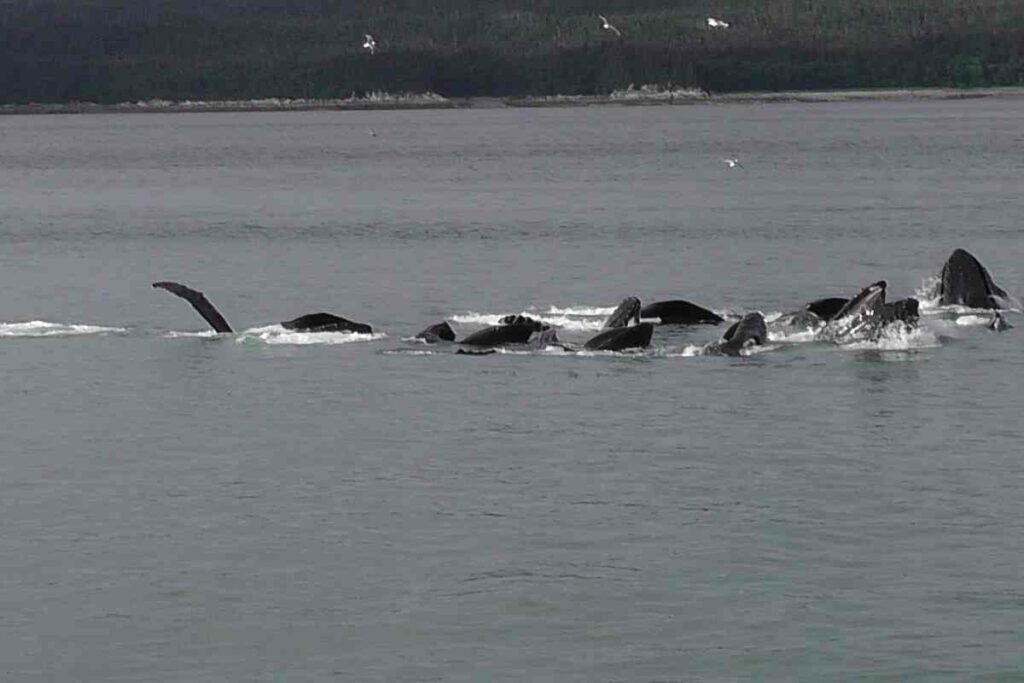
Of the eighty plus different whale species, each one has its own pattern of migration. Some species will travel thousands of kilometers every year to find breeding grounds and food.
The arctic waters have suitable whale food in abundance during the warmer summer months, but when the weather starts to change they head to warmer waters.
The reason different species migrate at different times is due to their differences in gestation period.
Humpback and blue whales, for instance, have a gestation period that’s between 11 and 12 months. This means they can breed and then give birth in the same warm waters.
Orcas, on the other hand are pregnant for up to 18 months, which means they might often give birth in their feeding grounds.
Pick one
Coming to Alaska for the food
Not all whales eat the same foods but the oceans around Alaska are rich in food for almost all whale species.
Minke and humpback whales will feed on schools of small fish and krill. Grey whales and beluga whales are bottom feeders.
A favorite of the grey whale are crustaceans, while beluga whales eat fish, squid, and octopus. Orcas will eat fish and marine mammals.
Which whales arrive first in Alaska?
You might find you can see an orca or two all year round in Alaska as some might remain in the inlets and bays.
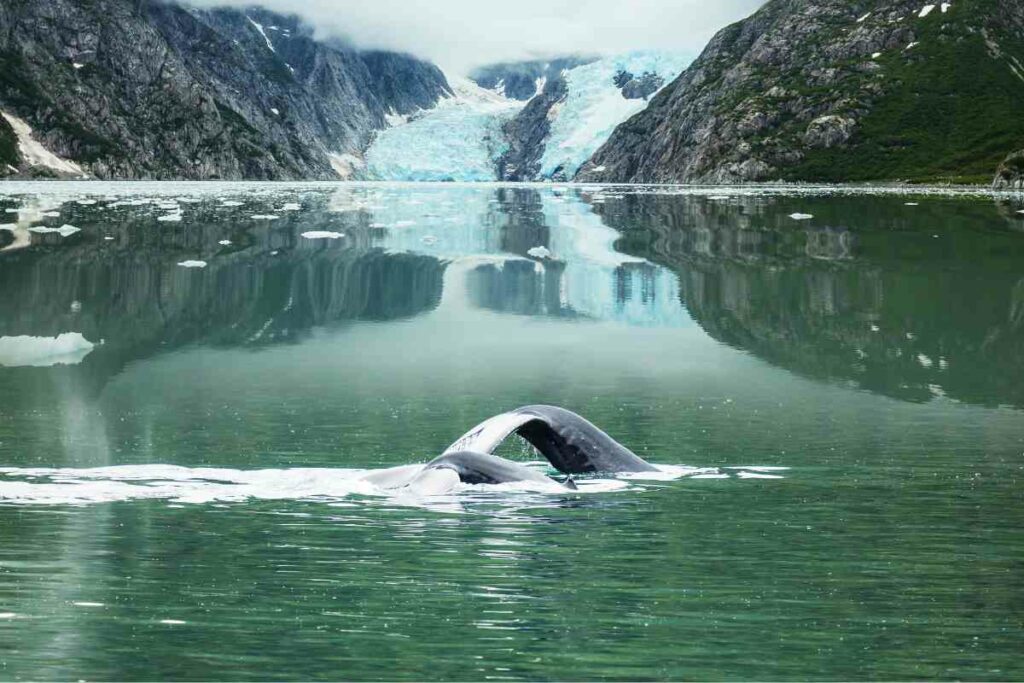
However, the summer months offer the best viewing of all whale species.
- Typically, the first to arrive are the grey whales. These will begin arriving in April and you might be able to see them off Seward.
- Then in May, you’ve got orcas arriving before humpbacks in late May June.
- Blue whales usually aren’t spotted until July when you’re likely to see them in the Gulf of Alaska’s open waters.
The grey whales travel the furthest in general with each migration journey being between 5,000 and 7,000 miles long.
They start to arrive off the coast of Ketchikan from April and work up to Seward. Some, however, will stay in British Columbia or even in California.
Into fishing? Take a look at 3 Best Fishing Packages In Alaska
What Are The Best Ways To See Them While Cruising?
Enjoying your cruise as its own valuable and wonderful experience is important.
Following the timeframes that we have provided, along with the likeliest location, will help up your chance to see these beauties of the deep straight from your ship.
However, some breeds of whale aren’t as social, so may be better experienced on an excursion.
Many cruise ship companies offer excursions directly through them and we encourage you to find out what your cruise may offer.
Always Good Idea – You may choose to contact travel companies within Alaska itself to find some great whale watching tour experts.
If I Go On An Excursion, What Should I Bring?
Although it’s summer during these peak whale watching times in Alaska, one might assume you still must bundle up for an excursion like whale watching.
You may be a little off the mark here.
Alaska does get into the 80s quite frequently during its summer months, so lighter clothing would be acceptable.
Canon EOS Rebel T7 DSLR Camera
As those sea breezes may get a little chilly, we would suggest you bring lightweight jackets or sweaters with you.
Sunscreen is always a must!
Make sure to check whether your tour company provides food, and if not, whether you are allowed to bring some snacks of your own.
YOUR CAMERA! Bring the best equipment you can so you may capture the breathtaking beauty that a great whale watching excursion may bring.
Make sure your equipment can be transported securely, and that you bring extra batteries and storage – you will hopefully need them with all the gorgeous shots you are going to get!
What species of whales can you see in Alaska?
Alaska’s cool waters are home to a diverse range of whale species, including beluga whales, blue whales, humpback whales and orca whales.
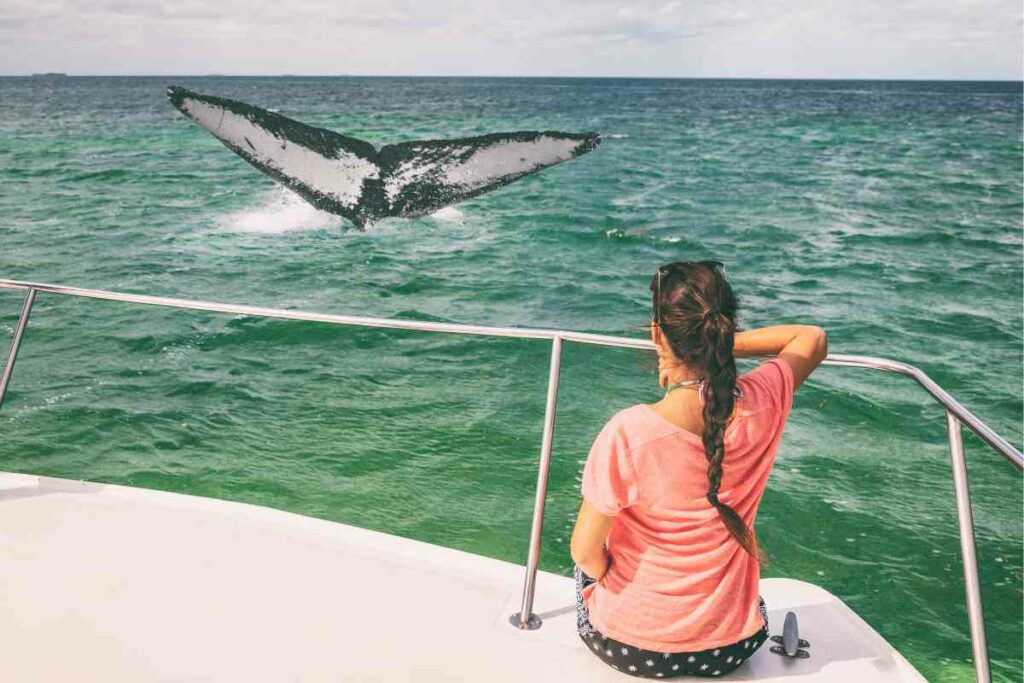
You’ll also see Harbor porpoises, Dall’s porpoises, harbor seals, stellar sea lions, grey ways, minke whales, pacific white-sided dolphins, and even bald eagles circling above!
Which type of whale you see will depend on your location and the time you go.
Final thoughts
There’s nothing quite like seeing an orca take a spectacular leap or see the sheer size of a humpback whale in person.
For these reasons, it’s imperative to get your timing right for your whale watching in Alaska.
The best way to see whales is to head to Alaska in summer and go on a boat tour. It’s a truly unforgettable experience, especially if you’re lucky enough to see more than one whale species!

